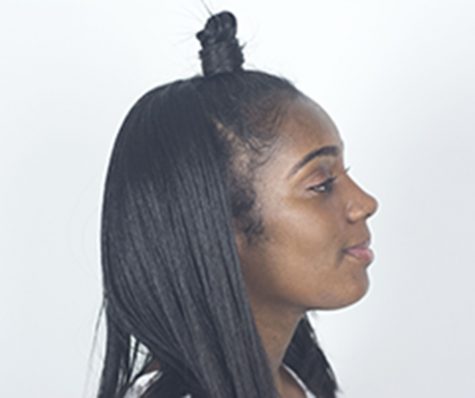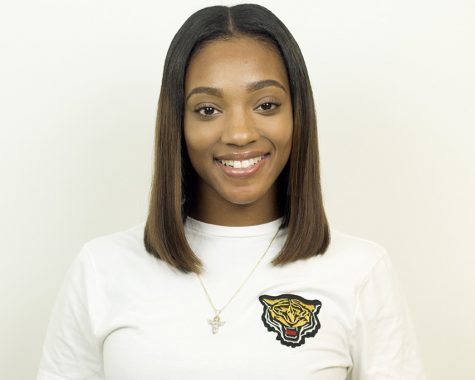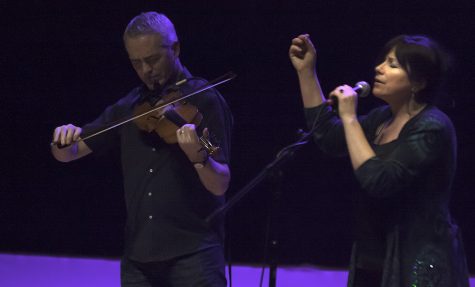Weekly Trends Section: Reviving popular styles
August 26, 2016

Kamille Hayslett, senior psychology major, posing with her “top knot bun” that originated from a hairstyle called bantu knots.
As the summer months come to an end, so are the popular summer trends we have either rolled our eyes at or personally strutted.
All things hair, fashion and makeup were on the forefront this summer thanks to technology. Celebrities recently released cell phone apps geared toward chic styles.
Mainstream social media platforms transformed into virtual fashion shows. Imagine how many “outfit of the day” hashtags you saw this summer as you scrolled through your Instagram feed.
Beauty bloggers and self-proclaimed fashionistas used Snapchat to showcase their fresh new ensembles and favorite not-so-natural makeup looks. Let’s be clear though, most trends are repeats. Oftentimes, the things we see people doing in this day and age have already been done. Yet we still give praise to the people brave enough to bring back the styles.
Woodstock styles became popular in the ’70s when hippies made their own tie-dye shirts with fringes and cutoff shorts. Those very looks were renamed after the summer music festival every free-spirited young girl loves to rave over, Coachella.
Instead of hundreds of young girls dancing wildly to a live band, everyday people wear so-called Coachella looks as common street wear. Fringe shoes, which Steve Madden rightfully took over, caught fire last summer.
A slightly lesser version of the overtly fashion-forward trend was popping this past summer with just a few fringes covering the shoes on the ankle straps or the small band across the toes.
Moving on to the ’80s, an assortment of chokers accompanied every night-time outfit this summer. According to Buzzfeed, chokers date back to the late 1700’s when women tied red ribbons around their necks to pay respect to those executed on the guillotine.
In the 1800’s chokers identified elite women with wealth, and in the ’40s “Life Magazine” issued photos of women wearing the century old necklaces renaming them “dog collars.”
Thus bringing us to the complete revival of chokers in the ’90s that boomed with new and improved varieties of the ever-so-fashionable trend made of plastic, metals, rhinestones and more.
Satin dresses sold out in stores and online this summer. The lightweight material makes for perfect evening gowns. Vintage satin was once strictly restricted to the upper-class.
Now high school girls across America wear satin dresses with extravagant beading designs to prom that end up buried in the back of their closets. Some were thrown off by this particular trend because satin is usually associated with nightgowns and robes as opposed to outerwear.
Despite the initial reaction from the public, satin dresses made designers a lot of money this summer. Last but definitely not least, freshly renamed boxer braids and top knot buns took storm this summer.
The common misconception is the Kardashians started the trend. However, UFC fighters have been sporting the center-parted French-braids for decades. “Top knot buns” are actually rooted from the common bantu knots African women put in their hair as either a style or a quick way to get bouncy curls after leaving them in for a while.
The braids have been culturally prevalent among the African-American community since the 1800’s. Quite frankly, cultural appropriation itself seems to be a trend but that is a topic I will save for African-American Heritage Month.
There is nothing wrong with taking something from the past and improving it but some things should stay in the past. Before you obliviously give credit to people for something they do or wear think about the people who came before them who have fallen between the cracks and been forgotten just like those expensive satin prom dresses.
Thaija Evans can be reached at 581-2812 or tvevans2eiu.edu.











































